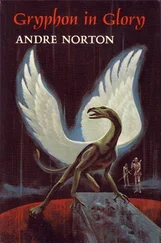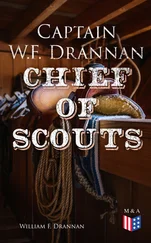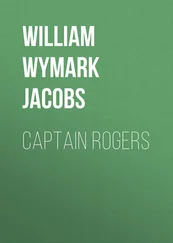William Shatner - Captain's Glory
Здесь есть возможность читать онлайн «William Shatner - Captain's Glory» весь текст электронной книги совершенно бесплатно (целиком полную версию без сокращений). В некоторых случаях можно слушать аудио, скачать через торрент в формате fb2 и присутствует краткое содержание. Год выпуска: 2007, ISBN: 2007, Издательство: Simon and Schuster, Жанр: Космическая фантастика, на английском языке. Описание произведения, (предисловие) а так же отзывы посетителей доступны на портале библиотеки ЛибКат.
- Название:Captain's Glory
- Автор:
- Издательство:Simon and Schuster
- Жанр:
- Год:2007
- ISBN:9780743453769 0-7434-5376-X
- Рейтинг книги:5 / 5. Голосов: 1
-
Избранное:Добавить в избранное
- Отзывы:
-
Ваша оценка:
- 100
- 1
- 2
- 3
- 4
- 5
Captain's Glory: краткое содержание, описание и аннотация
Предлагаем к чтению аннотацию, описание, краткое содержание или предисловие (зависит от того, что написал сам автор книги «Captain's Glory»). Если вы не нашли необходимую информацию о книге — напишите в комментариях, мы постараемся отыскать её.
Captain's Glory — читать онлайн бесплатно полную книгу (весь текст) целиком
Ниже представлен текст книги, разбитый по страницам. Система сохранения места последней прочитанной страницы, позволяет с удобством читать онлайн бесплатно книгу «Captain's Glory», без необходимости каждый раз заново искать на чём Вы остановились. Поставьте закладку, и сможете в любой момент перейти на страницу, на которой закончили чтение.
Интервал:
Закладка:
On the island continent of Atlantis, the early morning then was crisp, the forests of Earth maple and birch bare of leaves, their empty branches little more than quick dark brush strokes against the pure blue canvas of a sky that had not been “alien” to humans for centuries.
Outside the main urban centers of the east coast, smoke trailed from the chimneys of housing clusters. The crackle and scent of burning wood added the sensory texture missing from the island’s efficient geothermal power plants that provided energy to its scattered communities. It was only at the Cochrane Institute that planet-based antimatter generators were used, a requirement of its cutting-edge work in warp propulsion.
More than thirty major buildings formed the main campus, their dusky red forms sweeping up a gentle rise of green foothills. The structures that commanded the hilltops looked out to Lily’s Ocean to the east and the rugged Rockier Mountains to the west. As the first human to journey to Centauri B II, Zefram Cochrane had thoroughly enjoyed exercising his right to name both the planet and its major geological features.
One of the uppermost buildings was a Starfleet installation. The research performed there was restricted, ensuring that Starfleet’s capabilities would always remain significantly more advanced than those of civilian ships, privateers, and any potential “peer competitors”– Starfleet’s current bland term for the restive Klingon Empire.
Officially known as Facility 18, the building was older than the others, constructed almost ninety standard years earlier. Its historic facade of intricately sculpted, red Centauran sandstone was set off by bold horizontal timbers of the pale, native Lincoln trees praised-and named-by Cochrane for producing logs of exceptional uniformity.
Facility 18’s stark and sleek interior, however, revealed signs of regular rebuilding and upgrading. The most recent changes dated from the frantic months toward the end of the Dominion War, eight years earlier. Though the realization was never discussed in public, the leadership of Starfleet was uncomfortably aware that the war’s heavy price for survival had also spurred one of the most productive periods of scientific advancement Starfleet had experienced for generations.
On this date, Middleday, Twelfthmonth 27 on New Montana, Stardate 58552.2 for the Federation at large, Facility 18 was preparing to run a static test on a prototype warp core. Little different in principle from those in service on most Starfleet vessels, the experimental device was notable for its size-almost one-third smaller than the standard design for its payload capacity. The anticipation was that, within a decade at the present rate of development, Starfleet would be able to test runabout-size vessels capable of warp-nine velocities. In terms of travel time, the galaxy grew smaller every day.
The prototype warp core was scheduled to come online at 0800 hours. For this test, it would produce a warp bubble approximately four meters in diameter with a field strength of no more than five millicochranes. These specifics were important: A warp field that weak would not be able to pop out of the planet’s relativistic frame. Even more significant, the core would remain motionless as researchers measured the field’s shape and stability, and the efficiency of the miniaturized synthetic-dilithium matrix-one of the keys to the warp core’s smaller size.
If the test were successful, space trials would follow, with the prototype warp core installed on a test sled.
But the test was not successful, and Starfleet’s Advanced Warp Development Group paid the price of that failure.
Commander Tresk Drumain was a third-generation Starfleet engineer, and the lead investigator on the current prototype tests. He had arrived at Facility 18 at noon the day before, and had worked through the night to prepare the prototype core for the static test.
As the time for the initialization approached, Drumain needed no coffee or other stimulant to stay awake. He was thirty-four standard years old, and the excitement and the challenge of the moment were more than enough to keep him alert. Even making commander by age thirty-two hadn’t been as thrilling as this test promised to be.
Drumain felt confident in his team’s preparations. The prototype core was already locked down in the center of the main test chamber-an immense, reinforced, triduranium-sheathed room more than one hundred meters on a side. Even if a miscalculation or a power surge resulted in the core jumping to warp, the chamber was aligned so that the planet’s own rotation would cause the core to slam into a vast reservoir containing four hundred thousand liters of water. That reservoir was built into the grassy hillside to the east of Facility 18. Because the core’s power supply remained outside the warp field, the field would collapse instantly, allowing for no more than a few hundred meters of travel.
There was no need for concern.
At 0750, in the dimly lit control room overlooking the test chamber, Drumain took his chair at the main monitoring console. As scheduled, the triduranium blast shield slid silently over the large observation window. Now the test core was visible only on the rows of console monitors displaying visual sensor readings from inside the chamber.
Three hours earlier, the atmosphere had been pumped out of the test chamber, leaving the core in a vacuum that was almost the equal of interstellar space. The visual images from inside the chamber were sharp and clear.
At 0755, Drumain glanced again at the message padd propped on the console so all could see. It held the good luck wishes of Commander Geordi La Forge. The man was a legend in Starfleet, and Drumain and his crew had been surprised and encouraged to realize that one of Starfleet’s greatest engineering geniuses was paying personal attention to what they were attempting here. La Forge had asked to be informed about the test results as quickly as possible, and Drumain looked forward to making that call sometime before lunch.
At 0759, Drumain polled his team-a group of more than fifty Starfleet and institute personnel. Their responses were instant and reassuring. All systems on the test core were checked and ready. All sensors were operational. The antimatter generator was online and producing the required level of power.
Drumain tugged down on his Starfleet jacket as the final few seconds of the countdown proceeded.
Timecode: zero.
Everything occurred exactly as planned.
For eighteen seconds.
That was when a warning alert flashed on Drumain’s board. A minor power surge.
It wasn’t large enough for the computer safety subroutines to automatically shut down the test, but the warning prompted Drumain to keep his hand over the large red “kill” switch.
His eyes jumped back and forth between the display showing the power graph and the display showing the test core, but except for the soft blue glow of the Cerenkov emitters running along its side, the core was unchanged from its initial condition.
Around him, Drumain could hear his team’s quick whispered conversations as they tried to isolate the reason for the surge.
Mirrin O’Hara was the first to see and report the residue.
At once, Drumain called for the visual sensors to enlarge the view of the core.
What he saw onscreen was puzzling. A dark shadow was forming around the core’s casing, growing as randomly as fingers of frost spidering over a window in winter.
Drumain enlarged the sensor image even more.
At closer resolution, the residue resembled grains of black sand. But now Drumain could see that it was accreting into cubes, the largest no more than a decimeter or so across, the others in a range of smaller sizes, some little more than specks.
Читать дальшеИнтервал:
Закладка:
Похожие книги на «Captain's Glory»
Представляем Вашему вниманию похожие книги на «Captain's Glory» списком для выбора. Мы отобрали схожую по названию и смыслу литературу в надежде предоставить читателям больше вариантов отыскать новые, интересные, ещё непрочитанные произведения.
Обсуждение, отзывы о книге «Captain's Glory» и просто собственные мнения читателей. Оставьте ваши комментарии, напишите, что Вы думаете о произведении, его смысле или главных героях. Укажите что конкретно понравилось, а что нет, и почему Вы так считаете.












